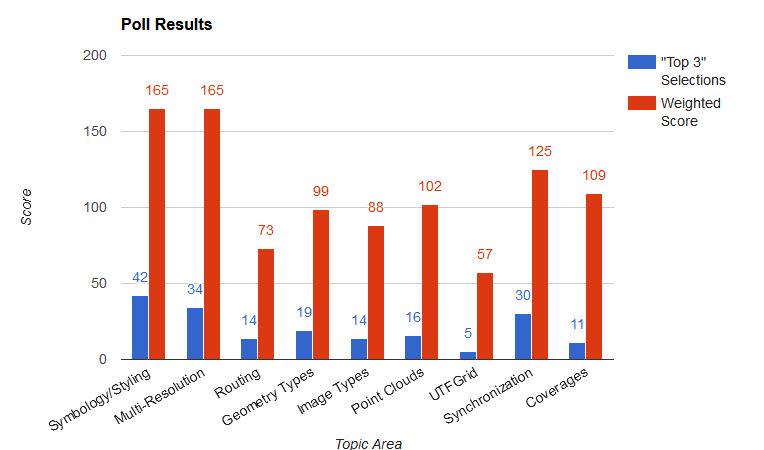Note: This post was mostly written by another GeoPackage SWG member, Thomas Neirynck of Luciad. Any editing mistakes are mine.
The GeoPackage encoding standard mandates in Requirements 22 and 30 that vector feature user tables shall only have a single geometry. This is advantageous for two reasons:
- It keeps the semantics of the data model concise: a feature has one shape. This is in line with other vector data formats with which GeoPackage is often compared, such as Shapefile or GeoJSON. By sharing this restriction, converting data from one format to another is more straightforward. This is particularly beneficial in enterprise workflows. For example, mobile components use a GeoPackage to view the business data, while the web-clients use a GeoJSON version of the same.
- Allowing multiple geometries per feature table would compromise GeoPackage's position in the GIS application ecosystem. Most ready-made GIS data viewers handle data formats in a uniform manner. Opening a file creates a layer on map and the layer shows the features contained in that file. There are usually some UI-capabilities to view properties of a feature or change the styling of a feature. If feature tables were to contain multiple geometries, the visualization of a GeoPackage in such a COTS-viewer would be much more complicated. What geometry should be shown on the map? All of them? Only the first? Editing tools would create a similar set of problems.
This restriction should not be seen as a limitation. Since a GeoPackage is a relational database, users can create rich data models to describe the required scenarios. Instead of adding more geometry columns to a single table, the general approach is to extract these geometries into a separate table, creating a one-to-many relationship between the geometries and the feature.
Because of the feedback we received on this topic, we recognized that we needed to produce some guidance to aid developers in producing compliant GeoPackages that handle non-trivial scenarios. This guidance has been published on geopackage.org. As always, we encourage public input on the specification itself and anything else that we can do to make things easier for the community.
